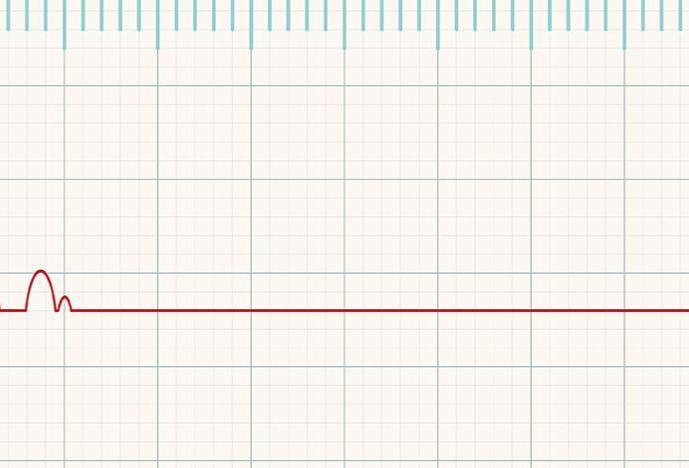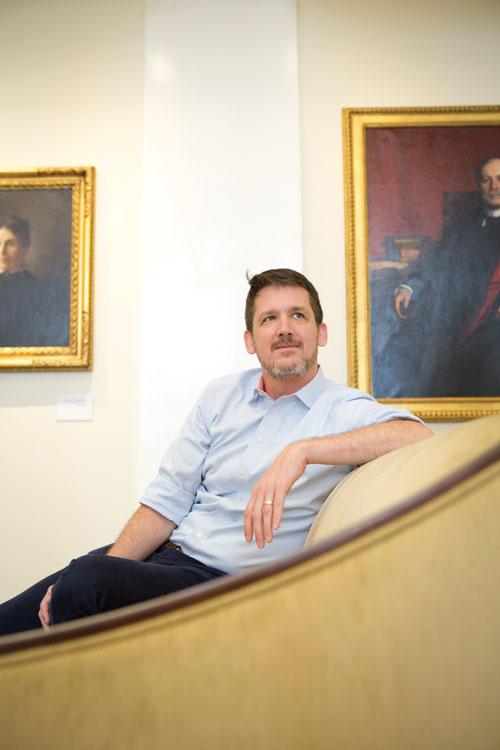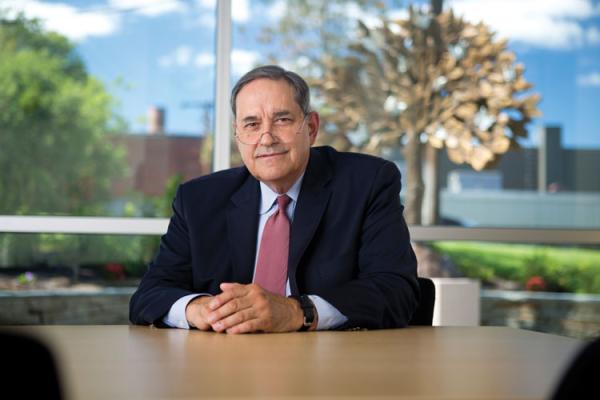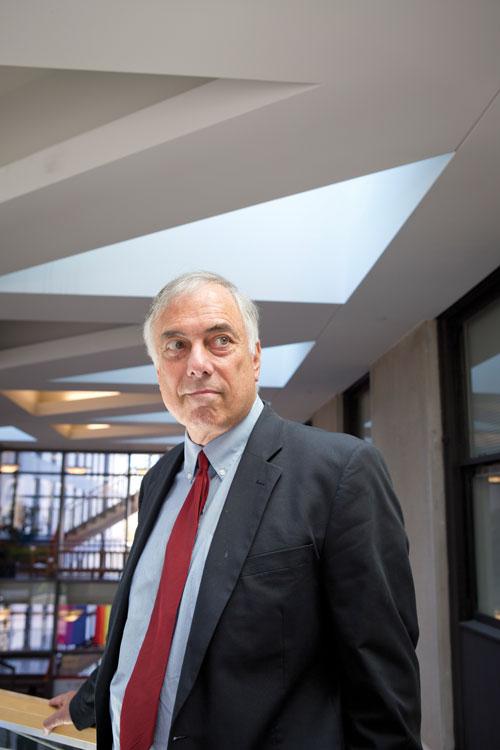
He was in the middle of a court case when he clutched his head and collapsed. Massive cerebral hemorrhage. The 45-year-old lawyer was rushed to Boston’s Brigham and Women’s Hospital.
To the physicians in the intensive care unit, it became clear that the patient had an irrecoverable brain injury; he would never wake up. After six days, his wife and two teenage children made the heartbreaking decision to withdraw life support. At least, they thought, they would be able to honor their husband’s and father’s wish to be an organ donor.
It wasn’t, however, so straightforward.
Because of a nationally agreed-upon principle called the dead-donor rule, the transplant surgeons wouldn’t be able to remove vital organs unless the patient was dead. Since he didn’t meet all the criteria for one definition of death—brain death—the family’s only option was to have his organs donated after cardiac death, when his heart stopped beating.
The patient was wheeled to an operating room and his ventilator disconnected. Then the wait began: If the heart stopped within an hour, and didn’t spontaneously restart within a few minutes after stopping, the attending physician would declare death, and then transplant surgeons would come in and retrieve the organs that remained usable. Longer than that, however, and poor circulation would render the vital organs unsalvageable.

Thirty minutes passed: the chance to rescue a transplantable liver evaporated.
His heart struggled but still beat.
Forty-five minutes elapsed. Sixty. The kidneys and pancreas were no longer usable.
After 80 minutes, the team gave up hope of rescuing even the hardiest organs. The patient began the trip back to the ICU.
His heart stopped in the elevator.
“The wife was very upset. The clinicians were upset,” recalls Thomas Cochrane, an HMS assistant professor of neurology at Brigham and Women’s who spoke with the family after the incident. “She didn’t understand why her husband’s organs couldn’t have been taken out before his heart stopped. Nobody benefited from letting things happen that way.”
Half a century after solid organ transplantation became a reality, the dead-donor rule remains a hotly contested topic in the transplant community. The rule is an ethical standard, not a law. Some of its most prominent critics are based in the Harvard medical community. So are some of its staunchest defenders.
Push, Pull
Proponents of sustaining the dead-donor rule emphasize that it strengthens public trust in the organ transplantation system by assuring potential donors and their loved ones that organs will not be removed before a person is declared dead. The rule fulfills the responsibility of physicians and surgeons to ensure that the removal of the heart or lungs, for example, does not cause a patient’s death. Perhaps most importantly, it underscores the foundational medical doctrine: Do no harm.
“In my estimation, on the scale from trust to expediency, I’m prioritizing trust,” says Francis Delmonico, an HMS professor of surgery, part-time, at Massachusetts General Hospital and chief medical officer of the New England Organ Bank.
Detractors point out that harm is already occurring. Dying patients who don’t fit the stringent requirements of the dead-donor rule and who want to donate their vital organs are prevented from doing so. Loved ones experience a double loss, a death without the opportunity to save others. At times, the quest to satisfy the rule unsettles practitioners, dissuades patients who want to donate, and compromises the quality of the transplantable organs.
“From the donor’s perspective, the deaddonor rule can interfere with your legitimate moral and medical goals,” says Cochrane, who is also director of neuroethics at the HMS Center for Bioethics.
A vocal minority led by Robert Truog, director of the HMS Center for Bioethics and the Frances Glessner Lee Professor of Medical Ethics, Anaesthesia, and Pediatrics at HMS and Boston Children’s Hospital, thinks the medical establishment should do away with the dead-donor rule and instead focus on minimizing harm and maximizing consent.
“With a more straightforward approach,” says Truog, “we could allow people to die in the way they want to die while still being able to fulfill their request to donate.”

Even though advanced surgical techniques have made transplantations more successful, supplies of internal organs are notoriously limited. Abolishing the dead-donor rule would seem to open one avenue to more donations, but Cochrane and Truog emphasize that the driving factors behind reevaluation are not organ shortages but rather the desire to do right by patients and practitioners and confront changing definitions of death.
“The price society is paying for insisting that doctors continue to follow the dead-donor rule is increasingly high,” says Daniel Wikler, the Mary B. Saltonstall Professor of Ethics and Population Health at the Harvard T.H. Chan School of Public Health.
The Birth of Death
Some say the debate began percolating in the late 1960s, when an HMS ad hoc committee chaired by Henry Beecher ’32, then an HMS professor of anesthesiology, advocated expanding the Black’s Law Dictionary’s definition of death to include what French physicians termed coma dépassé and the Beecher committee called brain death; that is, complete and irreversible loss of brain function.
“An organ, brain or other, that no longer functions and has no possibility of functioning again is for all practical purposes dead,” the committee members wrote in JAMA in 1968. They then outlined the criteria for determining whether a brain was permanently nonfunctional.
The Uniform Determination of Death Act, or UDDA, created in the early 1980s and adopted by all fifty states, reified the committee’s decision by listing brain death as one of two manifestations of legal death, the other being the traditional definition of irreversible cessation of circulation and respiration.
Together, these reports established that with families’ permission, doctors who withdrew life support from legally dead patients would not be committing murder or another illegal act. In doing so, the reports legitimized a pool of donation-eligible organs that were still being nourished and oxygenated.
Whether members of the Beecher or the UDDA committees were motivated by the desire to increase organ supply, and whether they stretched the definition of biological death to get there, remain points of contention.
A few practitioners, like Truog, say the committees could have been more nuanced. They could have asserted that while people with neither independent circulatory or respiratory function nor the hope of regaining consciousness are technically alive, it would be ethical to retrieve vital organs if consent had been given. For most in medicine, however, there is no doubt that both brain death and circulatory death are true death.

Wikler wrestled with these issues when he served on the presidential commission that drafted the UDDA. He had published a paper in which he argued that brain death shouldn’t be considered death, but colleagues urged him to reconsider his position for the report or risk alarming the public.
He finally had to ask himself, “What’s my highest priority? Is it to save lives, or is it to get the logic straight?” He decided, “It’s to save lives.”
The standard was upheld: Donor death is the only acceptable way to obtain vital organs.
“Maybe in the long run it would have been better to argue about the dead-donor rule than to argue about brain death,” says Cochrane.
Many Means to an End
Brain death isn’t the only aspect of the dead-donor rule that raises practical and semantic quandaries.
Exact numbers haven’t been gathered on organs lost to warm ischemia—damage sustained from little to no circulation while still at body temperature—but a 2014 paper in the American Journal of Bioethics estimated that waiting for cardiac arrest after removal of life support, and then waiting a few minutes more, eliminates 2,200 organs from the donor pool each year. Another 6,700 organs may be lost annually while waiting for donors with severe brain injuries to progress to brain death.
The volume of compromised or unusable organs combined with a lack of conclusive evidence about the minimum amount of time after which a nonbeating heart is unlikely to restart on its own have prompted some institutions to trim the waiting period for donation after cardiac death. Wait time after cardiac arrest shrank from 2 minutes to 75 seconds at one Colorado hospital, for example.
In addition, since some hearts retrieved after so-called cardiac death can be transplanted and restarted, debates churn about whether the donor was really dead.
In small pockets around the country, “imminent death” donation has gained a foothold. Under this protocol, surgeons retrieve a patient’s kidney or liver lobe with consent, allow a few days of “recovery,” then cease life support. The sequence serves to prove the organ removal didn’t kill the patient.
These and other variations “have made a lot of people queasy,” says Truog.
Truog helped craft the protocol for donation after cardiac death at Boston Children’s and is among those who dislike workarounds. “We are honoring the dead-donor rule in the breach,” he says. Instead, he and colleagues advocate for simplicity and transparency.
Public’s Pulse
Those in favor of eliminating the dead-donor rule emphasize that a replacement system must be based on extraordinarily high standards of consent and a commitment to ensuring that patients aren’t harmed. Rigorous medical, legal, and ethical guidelines would be essential to easing slippery-slope concerns.

“With proper safeguards, no patient will die from vital organ donation who would not otherwise die as a result of the withdrawal of life support,” Truog co-wrote in the New England Journal of Medicine in 2008.
Responsibly revised rules, they say, would help protect vulnerable populations, such as people with dementia and mental illness, and disallow people from volunteering for suicide by donation.
Even with these proposed safeguards, fear of public condemnation makes those on both sides of the debate reluctant to speak up. Voicing the possibility of taking people’s organs before they’re dead, let alone suggesting that it may already be happening, could shatter the fragile trust the transplantation community has earned since the 1960s.
“We don’t want that to happen,” says Wikler. “Organ transplantation is one of the reasons to be grateful we have modern medicine.”
But would that trust really shatter? Cautious optimists like Truog and Cochrane point to clinical experiences where family members refer to brain-dead loved ones as being “kept alive” on ventilators yet have no qualms about donating their organs.
A few studies have attempted to gauge public opinion. In a 2014 survey of 1,000 U.S. residents reported in the Journal of Medical Ethics, 71 percent of respondents said it should be legal to donate the organs of patients in irreversible coma even though donation would cause their deaths; 67 percent said they would want to donate in such a situation. A 2016 survey in the Journal of Medicine and Philosophy, however, found that the public is “increasingly wary” of conflicts between organ donation and determination of death.
Biding Time?
Forty years ago, withdrawing life support from hopeless cases was considered the proximate cause of patients’ deaths. Gradually, laws changed to reflect medical community and public agreement that patients’ preexisting conditions were what caused their deaths. The same transformation could occur regarding the removal of vital organs.
If organ banks and policymakers remain conservative in their approaches to the removal of vital organs, it’s because medical practice needs to change slowly, waiting for professional and societal tides to turn.
While they wait for this possibility, critics of the dead-donor rule may find themselves thinking one thing and practicing another.
“I have to be somewhat split-brained,” says Truog. “As an ICU physician, I need to practice in a way that respects the status quo. In conversations with colleagues and when I teach, I talk about it in a different way.”
Perhaps the dead-donor rule, however fraught, needs to hold for only another ten or twenty years, until one research avenue or another leads to an alternative organ supply.
“When organs come entirely from pigs, we’re no longer going to need a diagnosis called ‘brain death,’” says Truog. “Maybe we should just wait.”
But holding out for a technological deus ex machina doesn’t satisfy everyone. “I hope that happens, because everybody will benefit,” says Cochrane, “and I also don’t want it to happen, because this ethical argument needs to be sorted out on its merits.”
If one day, doctors, surgeons, patients, families, lawyers, policymakers, ethicists, and others agree that overhauling the dead-donor rule would do more good than upholding it, there would be reason for both celebration and worry. The battle over definitions and greater patient autonomy would be won, but then the hard work of implementation would begin.
Stephanie Dutchen is a science writer in the HMS Office of Communications and External Relations.
Images: iStock (top); John Soares